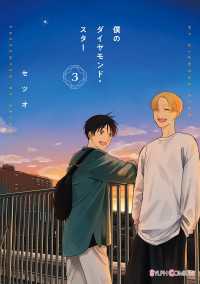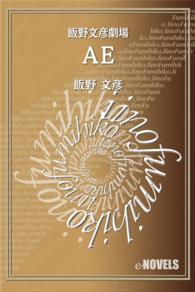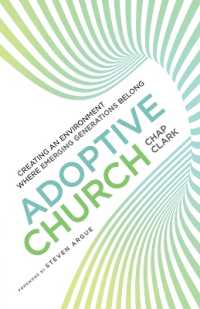Full Description
The writings of Straub and Huillet, presented for the first time in a critical, English-language edition, shed light on the filmmaking couple's essential contributions and their unique place in film history.A text is spoken; it merges the sphere of ideas, from which it comes, with an immediate and sensible sphere of bodies that give life to them, with a nature that sustains these bodies, and that they in turn nourish by naming it. The body, in which language resonates, becomes the body of the text itself and protracts its speaking.Here trees are trees and become trees. We learn by taking pleasure in the sublime essence of colors (leaf-green, earth-brown, sky-blue, bronzed-skin...), of timbres (voices, birds, steps...), of textures (flesh, fabric, earth...), the irreversibility of gestures.These shots are rich in their concerted poverty: here's how.-Anne Benhaiem, from introduction to "Conception of a Film"Sequence Press is pleased to announce the publication of the writings of the filmmaking couple Jean-Marie Straub and Daniele Huillet, presented for the first time in a critical, English-language edition. Two of the most exacting directors of the past fifty years, Straub and Huillet are renowned for their meticulous adaptations of works by giants of Western art and literature: Sophocles, Corneille, Bach, Hoelderlin, Cezanne, Brecht, Schoenberg, Kafka, Pavese, et al. The publication coincides with the first complete U.S. retrospective of their films at the Museum of Modern Art in New York, and the concurrent exhibition, Films and Their Sites, at Miguel Abreu Gallery.Jean-Marie Straub came of age as a slightly younger contemporary of the French New Wave. Like those directors, he began his career writing film criticism. "Writing about films," Jean-Luc Godard later said, "was already a way of making films." This volume thus begins with Straub's early film criticism from the 1950s and traces the evolution of over five decades of writing activity, from manifestoes and trenchant declaratory texts, to detailed descriptions of working methods, letters, questionnaires, and select interviews and oral interventions.Writings opens with an introduction by Sally Shafto that provides an in-depth look at Straub and Huillet's beginnings, within the context of the emergent filmmaking forces of the time. The book highlights their rigorous methodologies as translators of key texts, and the precision work required to adapt those translations for the screen. As Straub himself said, "We are the only European filmmakers, filmmakers of European nations. We make films in Italian as well as in French and in German. Who else can say that?" The book brings us behind the scenes and reveals how their publication practices mirrored those of their film production and distribution, as they often made distinct versions of the same film using alternative takes and different languages.In addition to the published texts, the book comprises a richly illustrated Atelier section featuring three full length annotated film scripts, along with other pieces of writing, such as letters to their collaborators, shooting diagrams and schedules, lab notes, and press kits, all of which bring the reader into the heart of Huillet and Straub's creative process. The volume closes with a Portfolio of intimate photographs of the filmmakers at work, with onsite observations by their long-time director of photography and collaborator, Renato Berta, and a detailed filmography.Jean-Marie Straub and Daniele Huillet resolutely eschewed a Hollywood style of spectacle filmmaking to create some of the most raw and beautiful, as well as innovative and profoundly moving films of our times. Their writings open up a further understanding of their essential contributions, and their unique place in film history.
Contents
Foreword by Miguel Abreu; Acknowledgments; IntroductionWork by Sally Shafto; List of Films; TEXTS:1950s: 1. The 15th Venice Film Festival Began Brilliantly with the Americans; 2. Grisbi, the Japanese, and Bunuel's Genius; 3. Does Rossellini's Work Have a Christian Meaning?; 4. Five New Films by Rossellini; 5. Clouzot Smears the Viewer; Hitchcock Exalts the Public; 6. Who Is Nicholas Ray?; 7. Status of the New Filmmaker; 1960s: 8. Once Upon a Time There Was a Little Filmmaker; 9. Portrait and Character; 10. M= M; 11. The Second Oberhausen Manifesto; 12. Not "Performing," Reciting; 13. Frustration of Violence; 14. Encounter with the New German Cinema; 15. The Bach Film; 16. Questionnaire on Film and Narrative; 17. Straub Autobiography; 18. Presentation of Not Reconciled; 19. I Have Always Been Horrified ...; 20. Peter Nestler, a Documentarian Not Reconciled; 21. On Ernst Lubitsch; 22. Protest; 23. The Bridegroom, the Actress, and the Pimp; 24. Introduction to Nestler; 25. Ferocious; 26. Mao's Last Judgment; 27. Eliminate the System and the State; 1970s: 28. Introduction to Othon; 29. Dubbing Is Murder; 30. Othon: Presentation for Its Broadcast on German Television; 31. Filmcritica, Eisenstein, Brecht; 32. "Not Reconciled" with Television Censorship; 33. Filmmaking Must Retain Teamwork ...; 34. Filmography of Jean-Marie Straub; 35. On The Business Affairs of Mr. Julius Caesar; 36. Interview on Direct Sound; 37. Small Historical Excursus; 38. Letter to the Export Union of German Cinema; 39. David Wark Griffith, Flower of the American Bourgeoisie; 40. Huillet Autobiography; 41. To Kluge; 1980s: 42. Letter to Jean Narboni; 43. Witches (The Chimera?); 44. How to "Correct" Nostalgia; 45. Letter to Fred Camper; 46. Reagan at Bitburg; 47. Fire: Alfred Edel; 48. Letter to Wim Wenders; 49. An Attack on the Reproducibility of a Work of Art; 50. Holderlin, That Is Utopia; 51. Cezanne/Empedocles/Holderlin/von Arnim; 52. Conference: Conception of a Film; 53. Filmcritica Is the Only Italian Review ...; 1990s: 54. S.D.; 55. Quite a Lot of Pent-Up Anger ...; 56. Interview on Chronicle of Anna Magdalena Bach; 57. Debate on Images and Virtual Reality; 58. Interview on Images and Magic; 59. To the Inhabitants Alive and Dead of Hiroshima and Nagasaki; 60. Interview: No Appeasement; 61. Autofilmography; 2000s: 62. Letter About La Vallee close; 63. Questionnaire on Globalization; 64. Frans van de Staak Has Died ...; 65. My Key Dates; 66. Questionnaire on May 1968; 67. Action Directe; 68. The Oil Spill; 69. Three Messages to the 63rd Venice International Film Festival; Work Journal for Moses and Aaron, by Gregory Woods with Annotations by Daniele Huillet; ATELIER: Letter to Renato Berta for Fortini/Cani; Itinerary for Too Early, Too Late; Letter to Willy Lubtchansky and Caroline Champetier for Too Early,Too Late; Diagrams for The Death of Empedocles; Shooting Schedule for Cezanne; Lab Notes for Cezanne; Negative Cutting Notes for Cezanne; Sound Mix Notes for Cezanne; Homage to Louis Hochet; Shooting Notes for From Today until Tomorrow; Letter to Willy Lubtchansky and Itinerary for Sicilia!; Location Notes for Sicilia!; Letter to Willy Lubtchansky About Sicilia!; Press Kit for Antigone; Annotated Script for Antigone; Press Kit for Workers, Peasants; Annotated Script for Workers, Peasants; Press Kit for A Visit to the Louvre; Annotated Script for A Visit to the Louvre Letter to Julie Koltai for Her Birthday; Press Kit for These Encounters of Theirs;Annotated Script for These Encounters of Theirs; PORTFOLIO by Renato Berta: Filmography; Compendium of the Writings; Selected Bibliography; Index of Names; Credits
-

- 電子書籍
- 僕のダイヤモンド・スター3 シルフコミ…
-

- 電子書籍
- 飯野文彦劇場 AE






